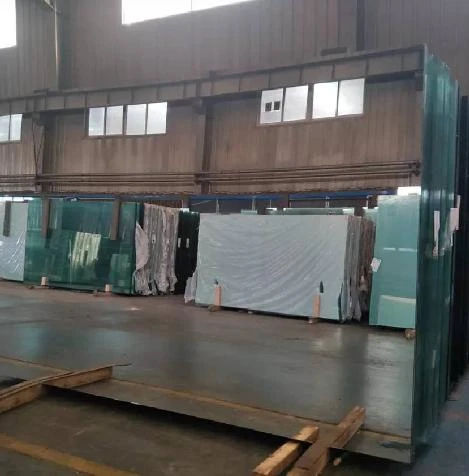Ultra Clear Glass A Gateway to Transparency and Innovation
In a world increasingly dominated by modern architectural aesthetics and design paradigms, ultra clear glass has emerged as an essential material shaping our environments. Its exceptional clarity and minimal distortion make it a favorite among architects, interior designers, and manufacturers alike, reinforcing its place as a key player in countless applications. Whether used in high-rise buildings, furniture, or decorative installations, ultra clear glass embodies the concept of transparency and sets the stage for innovation.
What is Ultra Clear Glass?
Ultra clear glass, also known as low-iron glass or optical glass, is crafted by reducing the iron content during its production process. Traditional glass contains iron oxide, giving it a greenish tint. In contrast, ultra clear glass is distinguished by its crystal-like clarity, allowing for an almost unobstructed view through the material. The reduction of impurities not only enhances color accuracy but also significantly improves light transmission, making it suitable for applications where visual purity is paramount.
Architectural Marvels
In contemporary architecture, ultra clear glass is often leveraged to create stunning facades that blur the lines between indoor and outdoor spaces. The glass's ability to let in abundant natural light while maintaining structural integrity has made it a favored choice among architects aiming to design energy-efficient buildings. Structures adorned with ultra clear glass can appear to float in their surroundings, creating an ethereal quality that invites nature into the built environment.
Moreover, buildings with expansive glass walls allow for unbeatable panoramic views and contribute to a sense of openness, making spaces more inviting for occupants and visitors alike. High-profile projects around the globe, from museums to corporate headquarters, have utilized ultra clear glass to craft iconic designs that challenge conventional architectural norms.
Interior Design Applications
ultra clear glass
In addition to its architectural applications, ultra clear glass has made significant inroads in interior design. From glass partitions that redefine office spaces to sleek tabletops in modern homes, this material is celebrated for its versatility. It allows designers to create minimalist yet functional spaces that prioritize light and airiness.
In kitchen design, ultra clear glass backsplashes and countertops can make a striking statement, while still being practical. The smooth surface is easy to clean, resistant to stains, and provides a seamless aesthetic that is hard to match with other materials. Additionally, glass shelves and cabinets contribute to a feeling of spaciousness as they showcase decorative items without visual obstruction.
Art and Decoration
The artistic possibilities of ultra clear glass stretch beyond functional design. Artists and sculptors frequently experiment with this material to create breathtaking installations and sculptures that manipulate light and shadow. In galleries and museums, ultra clear glass is often used in display cases, providing the perfect balance between protection and visibility for precious artifacts. Such applications enhance the viewer's experience, drawing attention to the art without distraction from the surrounding environment.
Moreover, ultra clear glass is a popular choice for mirrors, offering a true reflection without the distortion often encountered in standard mirrored glass. This feature is especially appreciated in spaces where accurate representation matters, such as in dressing rooms or artist studios.
Sustainability and Future Prospects
As sustainability continues to be a central focus in design and construction, ultra clear glass is emerging as an eco-friendly alternative to other materials. Its energy efficiency—achieved by maximizing natural light and reducing the need for artificial lighting—aligns with modern green building standards. Innovations in glass technology, including self-cleaning coatings and enhanced insulating properties, promise to further increase the material's appeal in sustainable architecture.
In conclusion, ultra clear glass represents more than just a material; it embodies a design philosophy rooted in transparency, innovation, and a harmonious relationship with the environment. As architects, designers, and artists continue to explore its potential, we can expect this versatile material to play a significant role in shaping the spaces of tomorrow, driving advances in aesthetic design while promoting sustainability. The journey of ultra clear glass is not just about clarity; it's about envisioning a future where transparency fosters innovation and connection.
 Afrikaans
Afrikaans  Albanian
Albanian  Amharic
Amharic  Arabic
Arabic  Armenian
Armenian  Azerbaijani
Azerbaijani  Basque
Basque  Belarusian
Belarusian  Bengali
Bengali  Bosnian
Bosnian  Bulgarian
Bulgarian  Catalan
Catalan  Cebuano
Cebuano  Corsican
Corsican  Croatian
Croatian  Czech
Czech  Danish
Danish  Dutch
Dutch  English
English  Esperanto
Esperanto  Estonian
Estonian  Finnish
Finnish  French
French  Frisian
Frisian  Galician
Galician  Georgian
Georgian  German
German  Greek
Greek  Gujarati
Gujarati  Haitian Creole
Haitian Creole  hausa
hausa  hawaiian
hawaiian  Hebrew
Hebrew  Hindi
Hindi  Miao
Miao  Hungarian
Hungarian  Icelandic
Icelandic  igbo
igbo  Indonesian
Indonesian  irish
irish  Italian
Italian  Japanese
Japanese  Javanese
Javanese  Kannada
Kannada  kazakh
kazakh  Khmer
Khmer  Rwandese
Rwandese  Korean
Korean  Kurdish
Kurdish  Kyrgyz
Kyrgyz  Lao
Lao  Latin
Latin  Latvian
Latvian  Lithuanian
Lithuanian  Luxembourgish
Luxembourgish  Macedonian
Macedonian  Malgashi
Malgashi  Malay
Malay  Malayalam
Malayalam  Maltese
Maltese  Maori
Maori  Marathi
Marathi  Mongolian
Mongolian  Myanmar
Myanmar  Nepali
Nepali  Norwegian
Norwegian  Norwegian
Norwegian  Occitan
Occitan  Pashto
Pashto  Persian
Persian  Polish
Polish  Portuguese
Portuguese  Punjabi
Punjabi  Romanian
Romanian  Russian
Russian  Samoan
Samoan  Scottish Gaelic
Scottish Gaelic  Serbian
Serbian  Sesotho
Sesotho  Shona
Shona  Sindhi
Sindhi  Sinhala
Sinhala  Slovak
Slovak  Slovenian
Slovenian  Somali
Somali  Spanish
Spanish  Sundanese
Sundanese  Swahili
Swahili  Swedish
Swedish  Tagalog
Tagalog  Tajik
Tajik  Tamil
Tamil  Tatar
Tatar  Telugu
Telugu  Thai
Thai  Turkish
Turkish  Turkmen
Turkmen  Ukrainian
Ukrainian  Urdu
Urdu  Uighur
Uighur  Uzbek
Uzbek  Vietnamese
Vietnamese  Welsh
Welsh  Bantu
Bantu  Yiddish
Yiddish  Yoruba
Yoruba  Zulu
Zulu 

